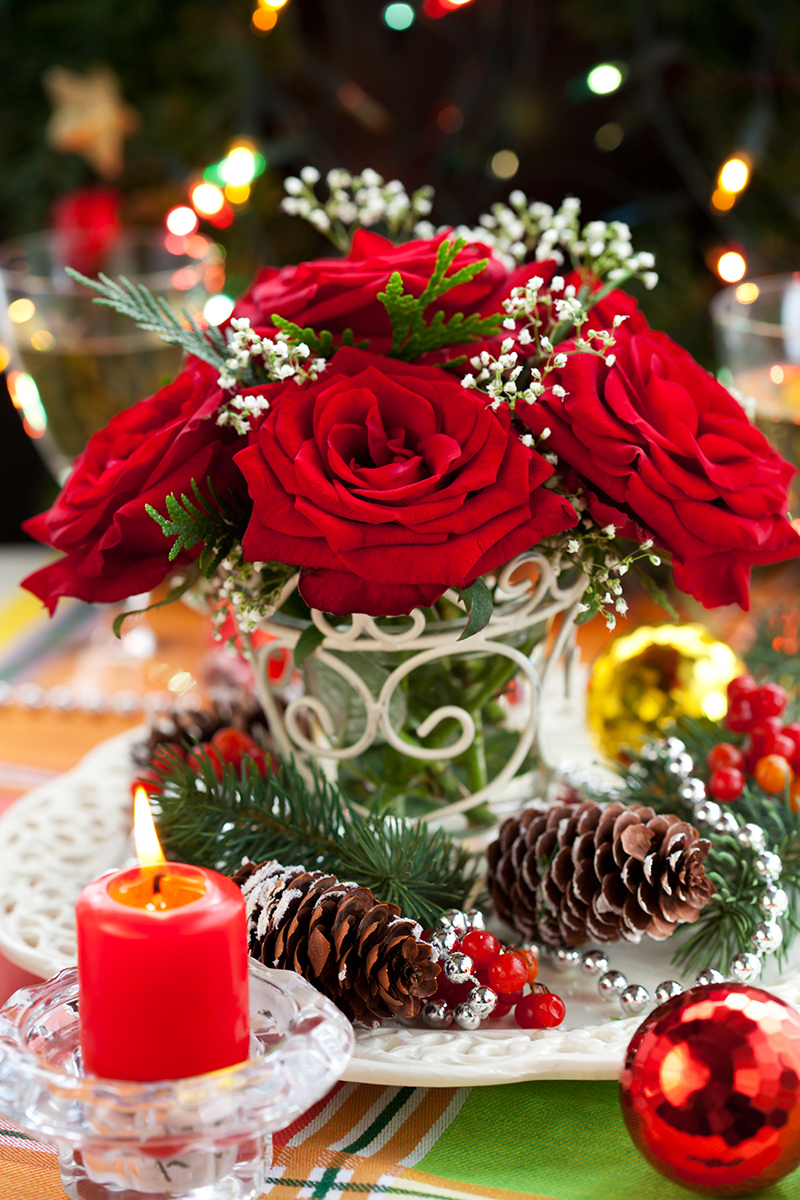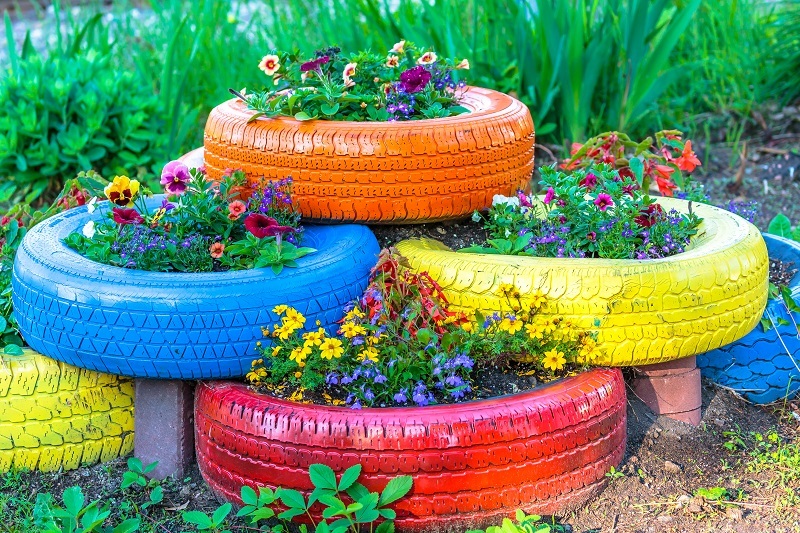Simple Steps to Make Poinsettias Thrive
Posted on 01/07/2025
Simple Steps to Make Poinsettias Thrive
Are you captivated by the vibrant red and green beauty of poinsettias during the festive season? With proper care, poinsettias can survive well beyond the holidays, rewarding you with their eye-catching bracts year after year. This comprehensive guide reveals simple steps to make poinsettias thrive in your home or garden, turning them from fleeting holiday decor into perennial delights.

Understanding Poinsettias: A Quick Overview
The iconic poinsettia plant (Euphorbia pulcherrima) is native to Central America and is celebrated worldwide for its colorful bracts, often mistaken for flowers. The true flowers are tiny and yellow, found at the center of the vibrant leafy bracts. With the correct poinsettia care, these plants can retain their striking appearance for months and even rebloom in subsequent years.
Step 1: Selecting a Healthy Poinsettia
The journey to make your poinsettia thrive begins at the time of purchase. Here's how to select the best plant for optimum growth and longevity:
- Inspect Bracts and Leaves: Choose a plant with large, vibrant, and unblemished bracts. Dull or fallen bracts may indicate poor health.
- Examine the Flowers: Look for tight, bright yellow flower buds at the plant's center. Open or faded buds mean the plant is past peak.
- Check Foliage: Healthy poinsettia leaves are deep green, lush, and free from wilting or yellowing.
- Assess the Plant Structure: A full, compact plant with plenty of leaves and bracts is preferable to a tall, spindly one.
Step 2: Provide the Ideal Environment
To make poinsettias thrive, you must replicate their native environment as closely as possible. Focus on the following elements:
1. Light Requirements
- Bright, Indirect Light: Place your poinsettia in a location with abundant, indirect sunlight. Direct rays may scorch leaves, while low light can cause dropping of bracts and foliage.
- Optimal Duration: Ensure the plant receives about 6 hours of soft light daily.
2. Perfect Temperature
- Stable Temperatures: Keep your poinsettias at 60-70?F (15-21?C) during the day and not below 55?F (13?C) at night.
- Avoid Draughts: Shield the plant from cold winds, open windows, and heat vents, which can cause leaf drop.
3. Humidity Needs
- Increase Humidity: Maintain moderate humidity by using a tray of water with pebbles or a humidifier, especially during dry winter months.
Step 3: Watering Poinsettias the Right Way
Proper watering is essential for flourishing poinsettias. Over or under-watering can spell disaster, so follow these simple watering rules:
- Check Soil Moisture: Only water when the soil surface feels dry to the touch.
- Drainage is Key: Ensure the pot has drainage holes, and remove excess water from saucers to prevent root rot.
- Water Thoroughly but Sparingly: Saturate the soil until water drains out the bottom, but avoid soggy conditions.
- Monitor Frequency: In a typical indoor environment, watering once every week is usually sufficient, but always adjust based on climate and potting mix.
Step 4: Fertilizing Your Poinsettia
While fertilizer is not needed when the plant is in full bloom, ongoing feeding ensures healthy foliage and potential reblooming after the holiday season.
- Wait Until After Bloom: Start fertilizing in late winter or early spring when new growth appears.
- Use Balanced Fertilizer: Apply a water-soluble houseplant fertilizer at half the recommended strength every 3-4 weeks.
- Avoid Over-Fertilizing: Too much fertilizer can damage roots and leaves.
Step 5: Pruning and Pinching for Fullness
Strategic pruning is a vital step to make your poinsettia flourish all year.
- After the Holidays: In spring, prune back stems to 4-6 inches above the soil once leaves start dropping. This encourages bushy new growth.
- Pinch Tips: As new shoots appear, pinch out the tips every few weeks until midsummer for a fuller plant.
- Remove Faded or Damaged Leaves: This prevents disease and keeps the plant looking its best.
Step 6: Repotting for Continued Growth
Repotting provides fresh nutrients and more room for roots:
- Repot in Late Spring: Move the plant to a slightly larger container with fresh, well-draining potting mix.
- Refresh Soil: Use a peat-based or lightweight commercial potting soil.
Step 7: Encourage Re-blooming for the Next Season
Want your poinsettia to display its signature color for next holiday season? You'll need to manipulate light exposure to trigger blooming:
- Initiate Short-Day Treatment: Starting in late September or early October, place the plant in complete darkness for 14-16 hours each night (cover with a box or put in a closet). Give it bright, indirect light during the remaining 8-10 hours of the day.
- Continue Short-Day Period: Maintain this routine for 8-10 weeks, until bracts begin to show color.
- Resuming Normal Care: Once color appears, return the plant to its regular spot and routine.
Common Problems and Solutions for Thriving Poinsettias
Understanding the pitfalls of poinsettia plant care will help you troubleshoot and maintain vibrant, healthy growth:
1. Leaves Turning Yellow or Dropping
- Problem: Overwatering, low light, or sudden temperature changes can cause foliage loss.
- Solution: Adjust watering practices, relocate to a brighter area, and ensure a stable temperature.
2. Poinsettia Not Blooming
- Problem: Lack of short-day treatment prevents bract coloration.
- Solution: Follow the prescribed dark period in autumn for 8-10 weeks to set blooms.
3. Pests and Diseases
- Pests: Watch for whiteflies, spider mites, and mealybugs. Inspect the plant regularly and wash leaves with lukewarm water or use mild insecticidal soap.
- Diseases: Root rot and fungal leaf spots are often caused by excess moisture. Use sterile tools and keep environment dry around foliage.
Advanced Tips for Expert Poinsettia Care
Once you master the basics, go beyond and achieve truly lush, long-lasting poinsettias:
- Rotate Plants Regularly: This encourages even growth and prevents the plant from leaning towards the light source.
- Support Tall Stems: Use stakes to support long flower stalks and prevent breakage.
- Group with Other Plants: Grouping your poinsettias with other indoor plants increases humidity naturally and creates a stunning display.
- Choose the Right Variety: Experiment with different poinsettia cultivars--from classic red to pink, white, and mottled varieties for a unique collection.
Is the Poinsettia Poisonous? Myth vs. Fact
A common concern for pet owners and parents is whether poinsettia plants are toxic. According to experts, the plant's sap may cause mild skin irritation or stomach discomfort if ingested in large quantities, but it is generally not deadly. Exercise basic caution, but there is no need for excessive worry.
Decorative Ideas: Making the Most of Your Poinsettias
A lively, healthy poinsettia isn't just for the holidays! Here are a few creative ways to display these thriving plants all year round:
- Festive Centerpieces: Combine poinsettias with candles, pine cones, and evergreen branches for stunning table arrangements.
- Outdoor Containers: In warm climates, use poinsettias to brighten patios and porches.
- Mixed Planters: Pair with ferns and ivy in decorative pots for an elegant indoor garden.

Frequently Asked Questions About Poinsettia Care
How long do poinsettias last indoors?
- With proper care, poinsettias can last up to six months indoors, and potentially year after year with reblooming.
Can I plant poinsettias outside?
- Yes, in USDA zones 9-11. Plant after all frost has passed, in a bright but shaded area, with well-drained soil.
Why are the red leaves turning green?
- Red bracts turn green when the plant is no longer blooming, typically when receiving longer daylight in spring and summer.
Conclusion: Let Your Poinsettias Thrive Year-Round!
Poinsettias are more than just a December decoration. By following these simple steps to make poinsettias thrive, you unlock the full potential of these beautiful plants throughout the year. With attentive care--selection, light, temperature, watering, feeding, and a little seasonal know-how--your poinsettias will remain vibrant, healthy, and an eye-catcher for months. Turn the holiday favorite into a perennial staple in your home or garden and enjoy lush color, year after year!
Latest Posts
7 Intriguing Insights Into Tulips That Will Captivate You
Discover Essential Tips for Healthy Hydrangeas
12 Long-Lasting Flowers to Brighten Your Space





